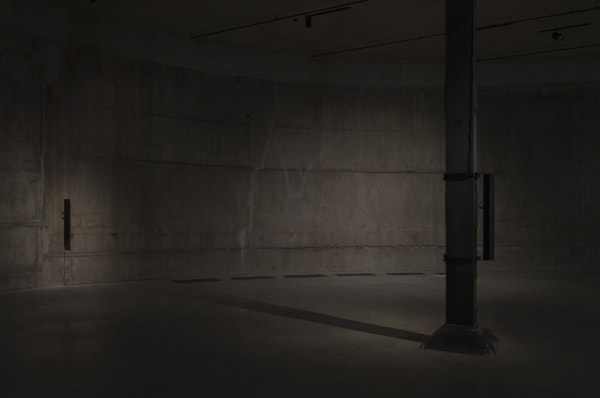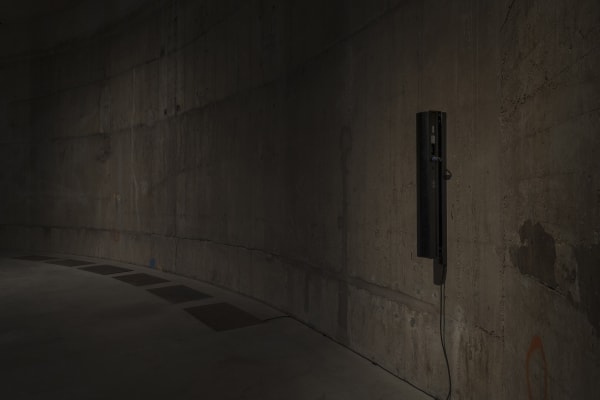Susan Philipsz: I See a Darkness: The Tanks, Tate Modern
I See A Darkness centers on two figures that share the name ‘Lucia’ – the Italian patron saint of the blind, Santa Lucia and the dancer, Lucia Joyce. The name Lucia originates from the Latin word for light – ‘lux’. In Sweden, the festival of Santa Lucia celebrates the coming of light on one of the darkest days of the year. Lucia Joyce was a talented performer, and the daughter of writer James Joyce. Her life took a tragic turn when she was diagnosed with schizophrenia and placed in institutional care, where she remained until her death.
In I See a Darkness Santa Lucia becomes a metaphorical ‘light’ that leads visitors through the darkened space. In contrast, Philipsz describes Lucia Joyce as ‘a bright light slipping into obscurity and darkness’. Visitors hear three songs, sung by Philipsz. The first is Will Oldham’s duet, I See a Darkness, which gives the installation its name. This is followed by Maurice Ravel’s piano piece, Pavane for a Dead Princess, which Lucia Joyce danced to with the group Les Six de rythme et couleur. The work finishes with the four-part Neapolitan folk song, Santa Lucia.
Philipsz believes that the significance of music changes over time and place.
Each time I See a Darkness is installed it takes on new meanings in response to the historical and cultural characteristics of the site. At Tate Modern, the cylindrical architecture of the Tanks generates layers of reverberating sound. The curved wall at the rear creates a whispering effect, drawing visitors into an intimate dialogue with Santa Lucia and Lucia Joyce.
Susan Phipipsz, "I See a Darkness" at The Tanks, Tate Modern, 2018.






